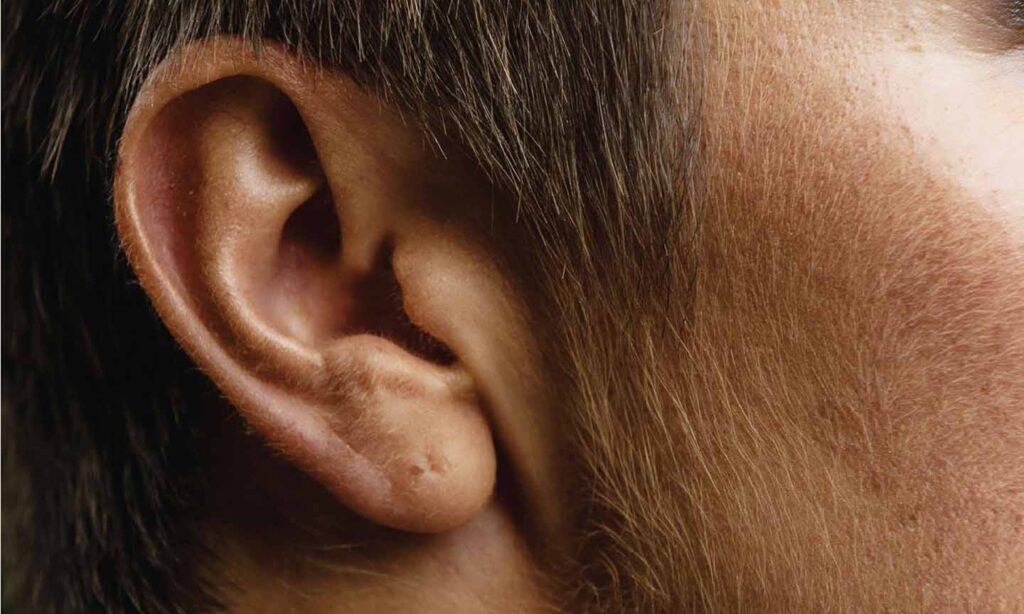Sensorineural hearing loss (SNHL) occurs when there is damage to the structures of the inner ear (cochlea). It’s generally permanent and the loss can be mild, moderate, severe, profound, or total.
Sensorineural hearing loss can be caused by age, disease, noise, or genetic causes, as well as damage to the nerve that runs from the inner ear to the brain (auditory nerve), which can be caused by disease, tumour, or genetic causes. Damage to the auditory system of the brain, caused by things like disease, or a stroke, can also lead to SNHL. Certain drugs, such as some powerful antibiotics, diabetes, high fever/elevated body temperature, heredity, obesity, smoking, and hypertension (high blood pressure) can all lead to SNHL as well. At this time, the only viable treatment for SNHL is hearing aids. Labs worldwide are trying to find a treatment or a preventative substance though. So far, genetic treatment seems to be the front runner for a cure to SNHL.
Conductive hearing loss (CHL) is caused by anything that interferes with the transmission of sound from the outer to the inner ear. It makes all sounds seem faint or muffled, and the loss is usually worse in lower frequencies.
It could be a malformation of the outer ear, ear canal, or middle ear structures, or a perforated eardrum. Fluid build-up caused by colds or upper respiratory tract infections will cause a temporary hearing loss, lasting until the infection passes. Middle ear infections, or otitis media, will interfere with the movement of the eardrum and ossicles. it should be temporary, but chronic otitis media can cause permanent damage.
Treatment depends on the cause of the problem. For a chronic build-up of fluid, a procedure involving the insertion of a grommet into the eardrum will help. Surgery may be needed for otosclerosis or ossicular chain dislocation. Repairing an eardrum, or replacing one, requires a procedure as well. If the problem is cholesteatoma, removal of the growth (usually a build-up of dead skin) and any surrounding compromised tissue should help.
Mixed hearing loss is a combination of both SNHL and CHL. Essentially, it’s where you have damage to both the outer/middle ear and the inner ear.
Usually, a person will have CHL for some time, before the SNHL manifests. Mixed hearing loss varies in severity, but usually is between moderate and profound. With it, sounds can be softer in volume, and more difficult to understand. Causes are the same as they are in isolation for each type of hearing loss. Treatment depends on the degree of hearing loss and make-up of the mixed hearing loss. Surgery could be undertaken if the problem is mostly conductive, but if surgery will not help very much, or if you don’t want to face it, hearing aids work too.
If you’d like more information, or have any questions, please visit www.lifehearingsolutions.com or call 289-755-0295 to book an appointment!
Works Cited:
Conductive hearing loss. (May 23, 2019). Retrieved on July 24, 2019 from
https://en.wikipedia.org/wiki/Conductive_hearing_loss
Cooling, G. (n.d.). All About Hearing Loss. Retrieved on July 24, 2019 from
https://www.hearingaidknow.com/hearing-loss#sens
Sensorineural hearing loss. (July 22, 2019). Retrieved on July 24, 2019 from
https://en.wikipedia.org/wiki/Sensorineural_hearing_loss



There is definately a lot to find out about this subject. I like all the points you made